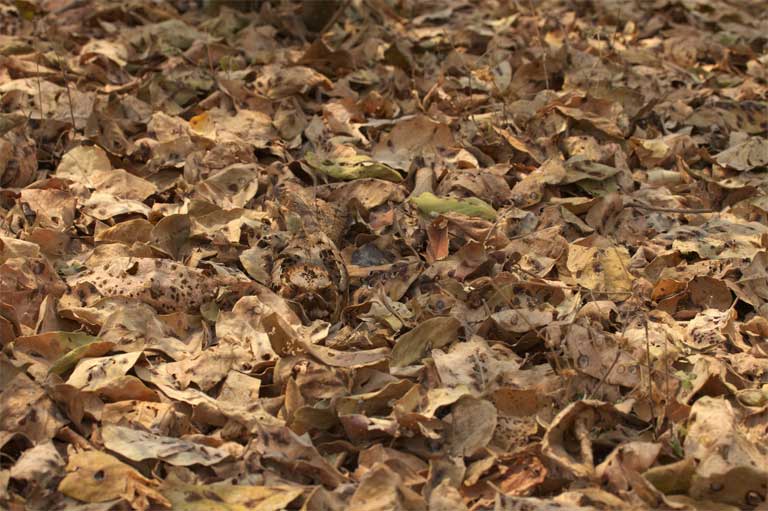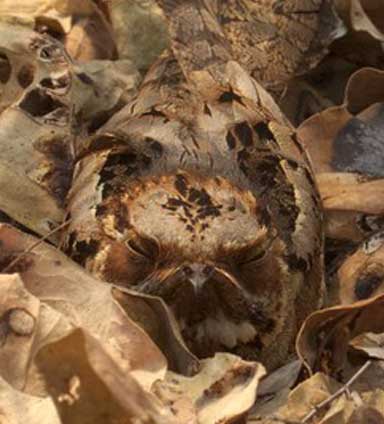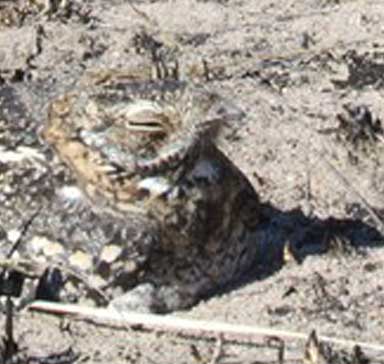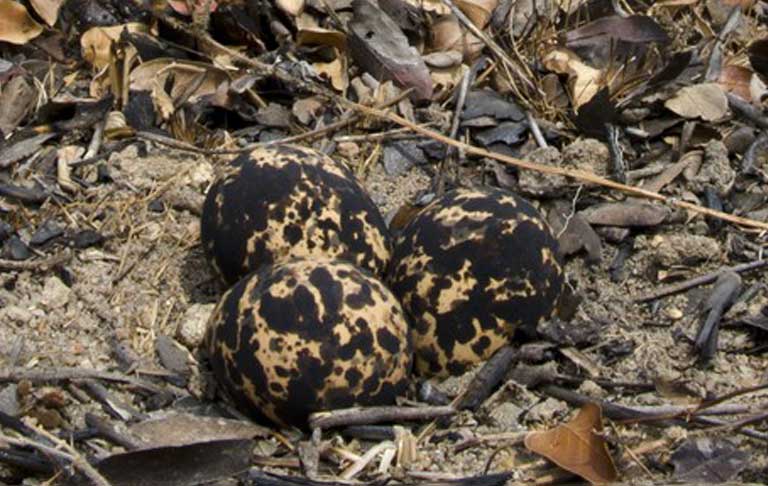- The limits of human vision, and the extraordinary way in which adult prey and their eggs blend into the environment, have long prevented scientists from thoroughly observing and defining the most effective mechanisms of camouflage.
- New research using digital imaging systems has allowed scientists to see prey camouflage as predators might view it — ranging from raptors who see in color and ultraviolet wavelengths; to mongoose with poor color vision.
- The study underlines how camouflage is the evolutionary product of both prey ecology and the visual systems of predators.

In a groundbreaking study conducted in southern Zambia, researchers combined advanced technology, local knowledge of area fauna, and prior research on the visual systems of predators, to finally see as a predator sees. In a first of its kind approach, the team from the Universities of Exeter, Cambridge, and Cape Town was able to collect valuable field data on how camouflage protects ground nesting birds, its overall effectiveness, and how predator and prey have co-evolved to use and sense it.
As published in Scientific Reports in January, 2016, the study, led by Dr. Jolyon Troscianko, of the University of Exeter’s Centre for Ecology and Conservation, utilized sophisticated digital imaging techniques to gain new perspective on how camouflage helps prey species successfully negotiate a risky reproductive strategy.
Although “it may seem obvious that blending into your background makes you less likely to be seen,” notes Troscianko, “but it is surprisingly difficult to test this in a natural setting,”

Previous research on camouflage relied heavily on laboratory-based simulations and models of predator behavior, while fieldwork was confined by the limitations of human sight. Science could imagine, but not duplicate, the visual capabilities of a hawk, skunk, or even a house cat. The new high-tech approach, which duplicates the perspective of predators, was a necessary response to the fluid nature of camouflage itself. “Very well camouflaged animals are difficult to find in the wild, and… they tend to keep moving around, meaning the match between their own appearance and their background is constantly changing,” explains Dr. Troscianko.
The study was not only able to replicate predator visual capabilities, but also to use it in real time in the field. Camouflage in the wild was quantified by both luminance and pattern — difficult to measure with human sight alone, but crucial for effective camouflage. Color metrics were analyzed as well, and matched to each predator species’ visual capability.

Martin Stevens from Exeter University, a project co-leader, along with Claire Spottiswoode from the University of Cambridge, point out that “ours is the first study to directly show how the degree of camouflage an individual has, [as seen through] the eyes of its predators, directly affects the likelihood of it being seen and eaten in the wild.”
Ground-nesting birds break new ground
Researchers focused on ground-nesting birds because the environment against which their camouflage functions is unambiguous — with nests and surroundings remaining visually constant during incubation, while the absence of a nest structure forces a heavy reliance on camouflage to avoid predation. The study focused on three nightjar species, three plover species, and three courser species, all native to southern Zambia.
First, scientists compiled a list of active predators in the study area using data obtained from local trackers familiar with southern Zambia’s mixed habitat of grassland, deciduous miombo woodland, and agricultural fields. Then they created computer models of predator visual ranges. They confirmed and refined their models using evidence gathered from strategically placed game cameras.

Next, they observed targeted nests on a regular schedule. They utilized digital cameras calibrated to simulate animal vision and view the nests as predators might see them. The models accounted for numerous variables — ranging from the sharp, color vision of predatory birds, who can see ultraviolet wavelengths; to the relatively poor color vision of mongoose that only see blues and yellows. The captured video images of nest-raiding predators included a baboon, bush shrike, and even some hungry children.
Different species, different camouflage techniques
Two of the studied species, plovers and coursers, abandon the nest quickly when a predator approaches, so their eggs bear the greater camouflage burden, needing to blend into the background to avoid detection. Researchers found that where the degree of contrast was lowest between the eggs and background environment, the rate of predation was also lowest. There was a clear correlation between the degree of egg match to the background and clutch survival. A mismatch between egg contrast and background contrast meant a significantly higher chance of predation.

Among nightjars, which conceal their eggs by remaining motionless over them, clutch survival was more dependent on the plumage contrast of adults. Adult plumage that better matched background patterns during incubation correlated to greater clutch survival.
Though this seems obvious, previous research relied upon color matches of the egg or feathers to the environment rather than contrast in pattern or luminance to the background. In the past, human observers unable to see the ultraviolet light that can reveal a nest to a raptor, could only make educated guesses regarding camouflage effectiveness. A color clearly seen by the human eye may be invisible to the searching gaze of an airborne eagle. Interestingly, a plover chooses to lay her eggs near stones of similar size to avoid shape differences discernable to gulls on the hunt.
Secrets waiting to be revealed
The new study finally verifies the long-standing assumption that camouflage protects an animal from predation, and offers further nuanced questions for study. For instance, other research has suggested that high contrast camouflage, with greater visual edge disruption, is more easily detected by primates, leading to the hypothesis that low-contrast camouflage techniques are utilized in regions where predators are better able to learn over time how to spot prey. In Zambia, the prevalence of high contrast camouflage, indicating a more generalized predator population, possibly supports this hypothesis.

“Future work should seek to further test camouflage in other taxa and varied environments to understand and quantify the adaptive advantages of camouflage, particularly with respect to its under-studied pattern and luminance components which this study suggest to be crucial in natural systems,” wrote the researchers. “Finally, our study underlines how camouflage is the product of both prey ecology and the visual systems of the appropriate predators.”
Further research — using sophisticated digital image analysis — will begin to allow science to see the world through other eyes, other senses, to uncover the long held secrets of the delicate dance of natural selection as both predator and prey adapt in a changing environment, using camouflage to create the world as we, and they, see it.

Citation:
Troscianko, J., Wilson-Aggarwal, J., Stevens, M., Spottiswoode, C. (2016) Camouflage predicts survival in ground-nesting birds, Scientific Reports, 6, 19966; doi: 10.1038/srep19966 (2016).
